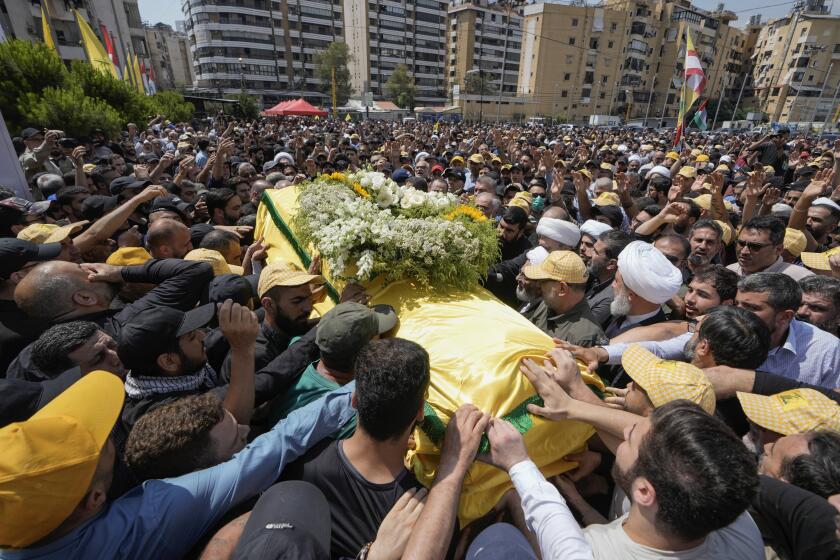Radiation exposure: Nuclear experts criticize, advise Japan
International nuclear experts are keeping a close eye on Japan as the island nation, ravaged by a record earthquake and the tsunami it created, struggles to contain a nuclear crisis threatening to spiral into catastrophe.
Japanese authorities insisted Tuesday the heightened levels of radiation detected as far away as Tokyo were unlikely to harm human health, but they were gradually acknowledging that the situation was far more menacing than they reported in the immediate aftermath of Friday’s natural disasters.
Neither Japanese officials with the Nuclear and Industrial Safety Agency nor experts with the United Nations’ International Atomic Energy Agency revised an earlier evaluation of the crisis at the Fukushima complex in northeast Japan that put the severity of the situation at 4 on the 7-point range of the International Nuclear and Radiological Event Scale.
Photos: Scenes of earthquake destruction
That spectrum rates nuclear incidents from a Level 1, meaning a minor problem with little human consequence, to Level 7, on the scale of the catastrophic Chernobyl nuclear accident 25 years ago.
Experts with the U.S. Nuclear Regulatory Commission told President Obama that they were in general agreement with the steps Japan had taken in response to the crisis at the six-reactor Fukushima facility, which has suffered fires, explosions and several hours’ exposure of the nuclear fuel rods.
Obama is “constantly being briefed” on the events at the nuclear complex in the area of Japan that took the full force of the magnitude 9.0 quake and the worst inundation of the tsunami, White House spokesman Jay Carney told reporters in Washington.
At IAEA headquarters in Vienna, Director General Yukiya Amano conceded that the core of one of the Fukushima reactors, the No. 2 unit that sustained an explosion Tuesday, might have been damaged. He said the severity of the explosion’s damage to the unit was still unclear but that plant operators estimated no more than 5% of the nuclear fuel had been lost in the most dire development at the stricken complex.
Amano said the reactor’s containment vessel also might have been damaged but that there had been no confirmation of reports that the housing had been compromised by the blast.
“Is it a crack? Is it a hole? Is it nothing? That we don’t know yet,” Amano told reporters. He noted that the pressure level in the containment structure hadn’t gone down, as would be expected if the cladding were broken.
Other nuclear experts contended Japan was downplaying the seriousness of the situation at Fukushima.
“It’s clear we are at Level 6,” said André-Claude LaCoste, president of the French nuclear safety agency. He said that level was akin to the 1979 crisis at Three Mile Island, the United States’ most serious nuclear incident, and only one degree below the 1986 catastrophe at Chernobyl, the northern Ukrainian nuclear complex where an explosion during a botched testing operation blew the roof off the reactor and released a radiation cloud that circled the Earth.
Russian nuclear specialist Yuli Andreyev told Reuters news agency in Vienna that the disaster at Fukushima looked to be the result of the nuclear industry putting production and profit ahead of safety.
“After Chernobyl, all the force of the nuclear industry was directed to hide this event, for not creating damage to their reputation,” Andreyev, who was part of the Chernobyl emergency response effort, said of what he saw as a knee-jerk impulse within the industry to cover up problems.
Andreyev said the IAEA was culpable as well as the Japanese commercial nuclear industry because the U.N. agency let corporate interests guide its policymaking and standard-setting.
Experts trying to evaluate the situation from foreign vantages appeared to agree that too little was known about the accidents that had plagued the Fukushima complex to gauge accurately the threat of escalation or risk to Japan’s people and environment.
Photos: Scenes of earthquake destruction
carol.williams@latimes.com
More to Read
Sign up for Essential California
The most important California stories and recommendations in your inbox every morning.
You may occasionally receive promotional content from the Los Angeles Times.











